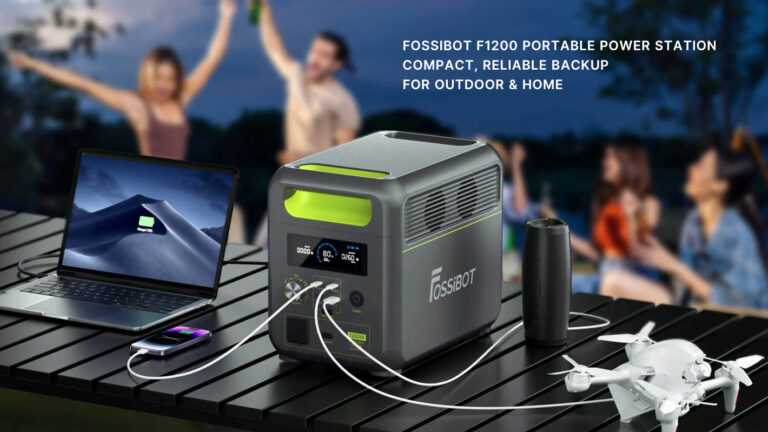How to Choose Portable Power Station for Van Life with 10 Expert Tips: Balance Power, Portability, and Price
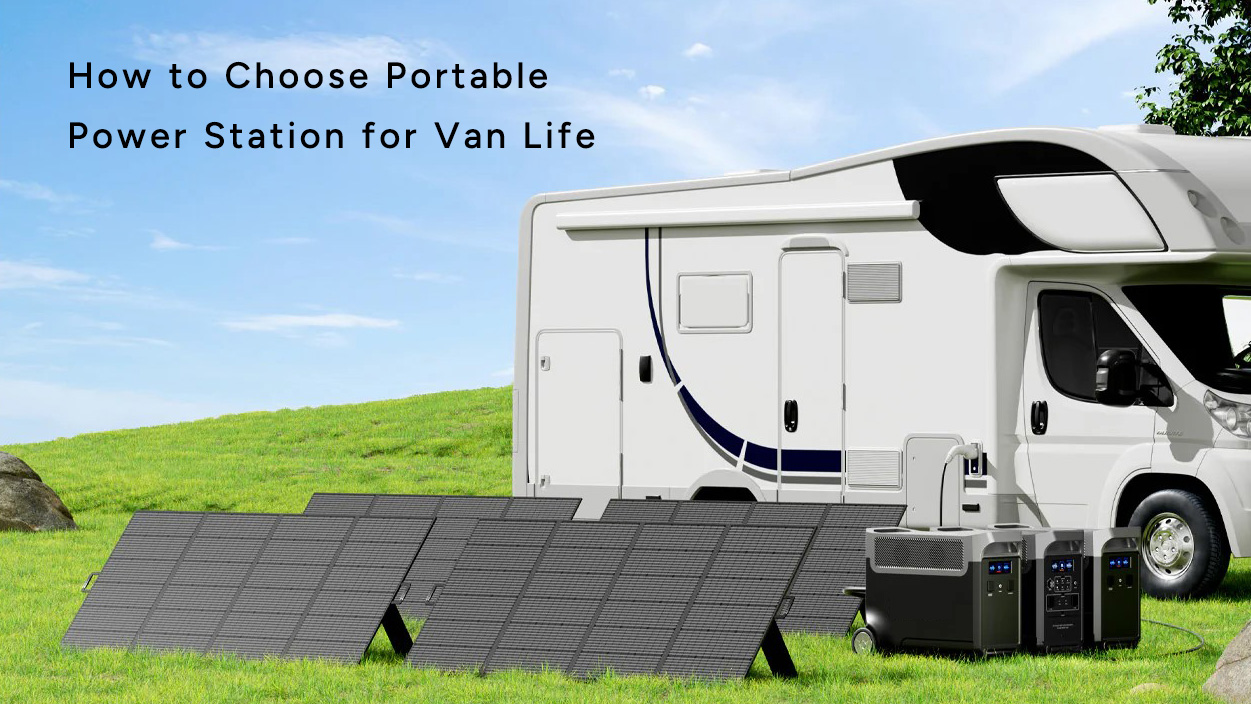
Whether you’re a weekend warrior or a full-time van lifer, a reliable power source is essential for staying connected, cooking meals, and charging devices off-grid. But with so many portable power stations on the market, choosing the right one for your van life adventure involves more than just looking at battery capacity.
While wattage and Watt-hours (Wh) are crucial for running your appliances and devices, size and weight can make or break your van setup. Every inch counts in a campervan, and a bulky or overly complex power station can become more of a burden than a solution.
Finding the right fit requires a thoughtful approach, as there are many models available, from sleek lithium options to all-in-one solar kits. In this guide on how to choose portable power station for van life, we’ll walk you through 10 practical tips to help you strike the perfect balance between power, portability, and practicality. This way, you can stay off-grid without sacrificing comfort or convenience.
✻ This page may contain affiliate links. If you purchase through these links, we may earn a commission at no extra cost to you. As an Amazon Associate, we earn from qualifying purchases. We only recommend products we believe will add value to our readers.
Size and Weight: Critical Constraints for Van Life
The confined nature of a van means that space is always at a premium. Even the most powerful portable power station can cause issues if it’s too large or heavy.
- Space Utilization: Vans are already packed with essentials like beds, kitchens, and storage. There’s limited room for extra equipment, and a large power station can eat into valuable living or storage areas.
- Mobility and Portability: Despite being called “portable,” a power station that’s too heavy can be difficult to move around the van, or to take outside for use at a campsite. This can quickly lead to frustration.
- Safety: During transit, an unsecure, oversized, or heavy power station poses a safety risk. In the event of sudden braking or an accident, it could shift dangerously, causing damage or injury.
Key Factors to Consider When Choosing Your Van Life Power Station
To strike the perfect balance between power and practicality, consider these essential factors:
Knowing the Specs: What Wh Means for Your Van
Wh is short for Watt-hours, we always use 1kWh in our life. Here’s a quick rundown of how long various devices might run on a 1kWh(1000Wh) unit:
- Mini-fridge (50W): Around 20 hours (approx. 1 days)
- Laptop (60W): Roughly 17 hours
- LED lighting (10W): Up to 100 hours (about 4 days)
- Charging smartphones (15W): Approximately 67 hours
1. Understand Your Specific Needs (Capacity vs. Portability):
For higher-wattage appliances like a portable induction cooktop or a hairdryer, run times will be significantly shorter due to their high power draw. To estimate your exact usage, sum up the Watt-hours of all your daily devices. For example, if your daily power consumption is 1000Wh, a 2000Wh unit would last roughly two days.
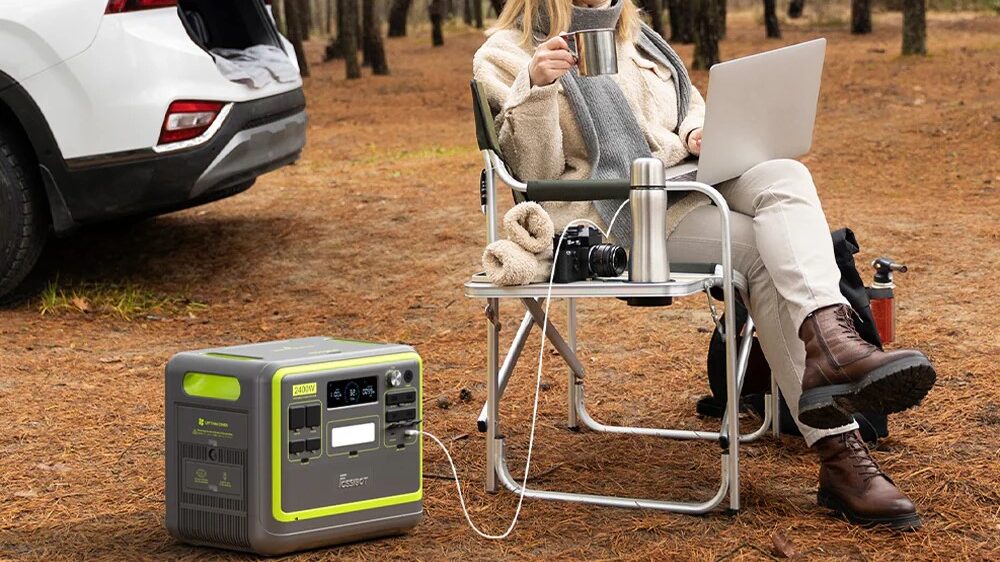
- Weekend Warriors/Occasional Users: If you’re only hitting the road for short trips or occasional use, a smaller, lighter model (e.g., 1000-1500Wh) might be perfect. It’s easier to carry and provides enough power for basic needs.
- Full-Time Van Lifers/High-Power Users: For those living in their van long-term or requiring high-wattage appliances, a larger capacity (2000Wh+) is necessary. However, focus on models that achieve this capacity with optimized size and weight. Look for brands that prioritize energy density in their design.
A power station with 2000Wh (Watt-hours) or more is an excellent starting point for most van dwellers, typically providing 1 to 3 days of power for essential appliances.
2. Pricing Considerations
This is understandably one of the top factors for most people. When it comes to portable power stations, the rule is simple: the higher the capacity, the higher the price. That said, there’s usually a sweet spot within your budget depending on your needs.
For example, a 1500Wh or less model typically costs under $800, with most options falling between $600 and $800. Power stations with 2000Wh or more are usually priced above $800, but during promotions or sales, you can often find them for less—sometimes between $700 and $800, especially when stacking site discounts. Two such high-capacity models are listed below, which can be a great deal if you catch them at the right time.
- 👉 Fossibot F2400 (Fossibot🇺🇸 , Fossibot🇪🇺) 2400W | 2048Wh, $699 after discount
- 👉ALLWEI PPS2400 Portable Power Station – 2048Wh | 2400W, $749 after discount
But price shouldn’t be your only concern. Safety should always come first, even when you’re trying to save money. A cheaper power station isn’t a bargain if it compromises on battery quality or protection systems.
If your budget is tight, consider starting with a slightly smaller capacity. In most cases, it just means recharging a little more often—there’s no real difference in how you use it. Also, solar charging is worth considering. During downtime, your battery isn’t just sitting idle—it can actually recharge from the sun. It’s free, renewable, and always available when the weather’s on your side.
3. Physical Size, Weight, and Portability with Wheels
When choosing a portable power station, it’s important to look beyond just the capacity (Wh). Physical dimensions and weight play a crucial role, especially in the limited space of a van. Always check the exact measurements (length × width × height) and weight of the unit, and compare them directly between models. A few extra inches or a couple of extra kilograms can make a surprisingly big difference—whether you’re trying to fit it into a tight storage area or lift it in and out of the vehicle repeatedly.
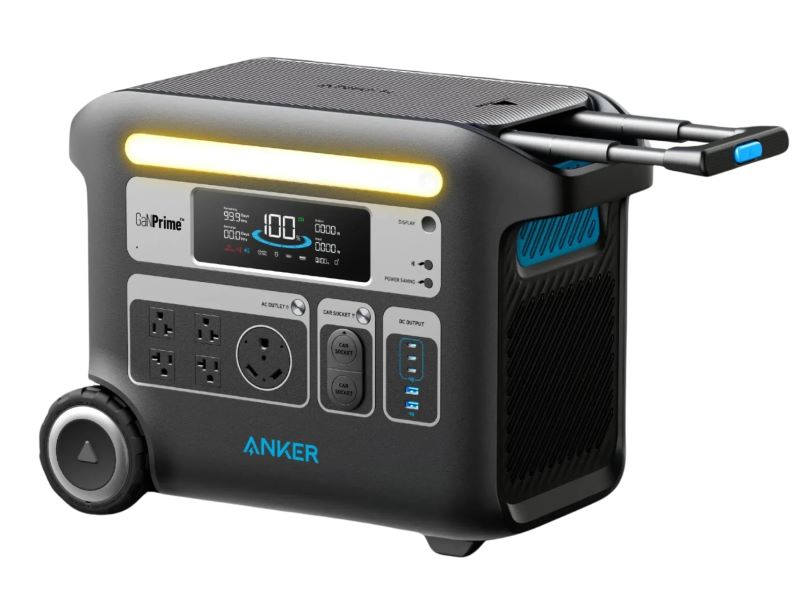
For larger capacity models (2000Wh and above), even with space-efficient designs, the weight can still be considerable. That’s why features like sturdy, well-placed handles, and in some cases, built-in wheels or telescoping pull handles—are more than just nice-to-haves. They can dramatically improve usability, especially if you need to move the power station around your van, to and from the outdoors, or reposition it regularly.
These particular models all come with wheels, and some even include a pull-out handle, making transportation much easier:
- 👉 Anker SOLIX F2000 2400W | 2048Wh (built-in wheels or telescoping pull handles)
- 👉 Jackery Explorer 2000 v2 2200W | 2042Wh (equipped with a basket-style handle)
In short, your power station should not only meet your energy demands, but also fit comfortably into your lifestyle—both in terms of space and how easy it is to handle day to day.
4. Battery Chemistry, Density and Cycle Life
Modern battery technology, especially LiFePO4 (lithium iron phosphate), is constantly improving. Look for power stations that boast high energy density, meaning they pack more power into a smaller, lighter package. LiFePO4 batteries also offer longer cycle life and enhanced safety, which are significant advantages for continuous van life use.
As mentioned, LiFePO4 batteries are superior for portable power stations used in van life. They offer significantly more charge cycles (2500-3500+ to 80% capacity) compared to traditional NMC (Nickel Manganese Cobalt) lithium-ion batteries (500-800 cycles), meaning your investment will last much longer.
5. Output Ports and Wattage
When selecting a portable power station, make sure it offers all the ports you need to keep your devices running smoothly. This typically includes a mix of AC outlets, USB-A, USB-C, and 12V DC ports. Consider what appliances and gadgets you plan to power: will you be running an induction cooktop, coffee maker, or hair dryer? These require higher wattage, so double-check that the station’s AC output wattage can handle your peak load. Additionally, for sensitive electronics like laptops or medical devices, look for a power station that provides a pure sine wave AC output—this ensures stable, clean power and protects your equipment from damage.
6. Charging Options and Speed
Reliable and flexible charging is essential for van life, especially when you’re off-grid for extended periods.
- Solar Charging: A must-have feature for sustainable, off-grid living. Pay close attention to the maximum solar input wattage the unit can handle and whether it has an efficient MPPT (Maximum Power Point Tracking) controller—this technology optimizes solar energy harvest, allowing faster and more reliable solar charging even in less-than-ideal sunlight conditions.
- AC Fast Charging: Time is often limited when plugged into grid power. Some power stations support fast charging, going from zero to 80% in an hour or less. This is incredibly convenient for quick top-ups during brief stops.
- Car Charging: Charging while driving is a smart way to maintain power on the move. Check whether the unit supports 12V car outlet charging and how efficiently it charges on the road.
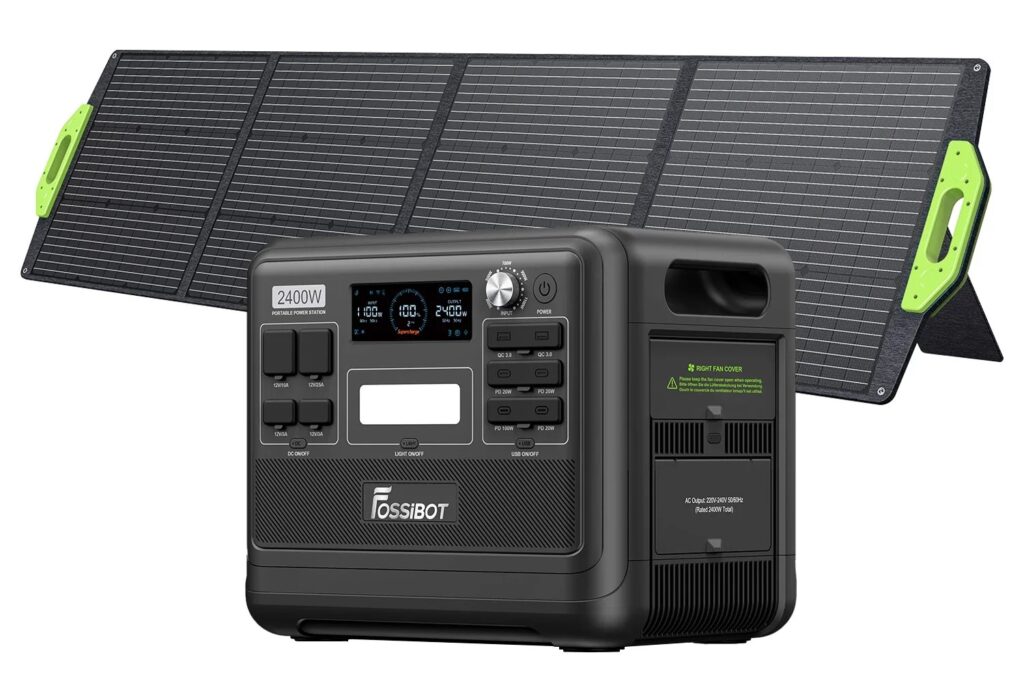
👉 Fossibot F2400 (Fossibot🇺🇸 , Fossibot🇪🇺) 2400W | 2048Wh, $699 after discount, and $958 with 1*200W Portable Solar Panel.
If you need solar panels, they may require an additional purchase since solar panels also come with a cost. However, solar energy is a natural resource that can help you save significantly on energy expenses—making it a smart, long-term investment.
7. Cooling and Durability
A compact power station often means high-density electronics packed into a small space, which can generate heat. Efficient cooling systems—such as built-in fans or heat sinks—are crucial to prevent overheating during heavy or continuous use. Overheating can shorten battery life and affect performance, so look for models with proven thermal management. Also, consider overall build quality and durability: a power station for van life must withstand bumps, vibrations, and occasional knocks as you drive or camp. Rugged designs with protective casing will serve you better on the road.
8. Expandability and Modularity
One growing trend in portable power solutions is expandability. Some systems allow you to connect additional battery packs or modules, enabling you to increase your power capacity over time without buying a bulky, single massive unit upfront. This modular approach is perfect if you want to start small—saving space and money—and scale up later as your power needs grow or your budget allows. Plus, it offers more flexibility in how you organize and store your gear inside the van.
9. Smart Features and App Control
Many modern power stations come equipped with companion smartphone apps, giving you unprecedented control and insight. Through these apps, you can monitor real-time power consumption, check battery status, and adjust settings remotely—whether you’re inside your van or away at a campsite.
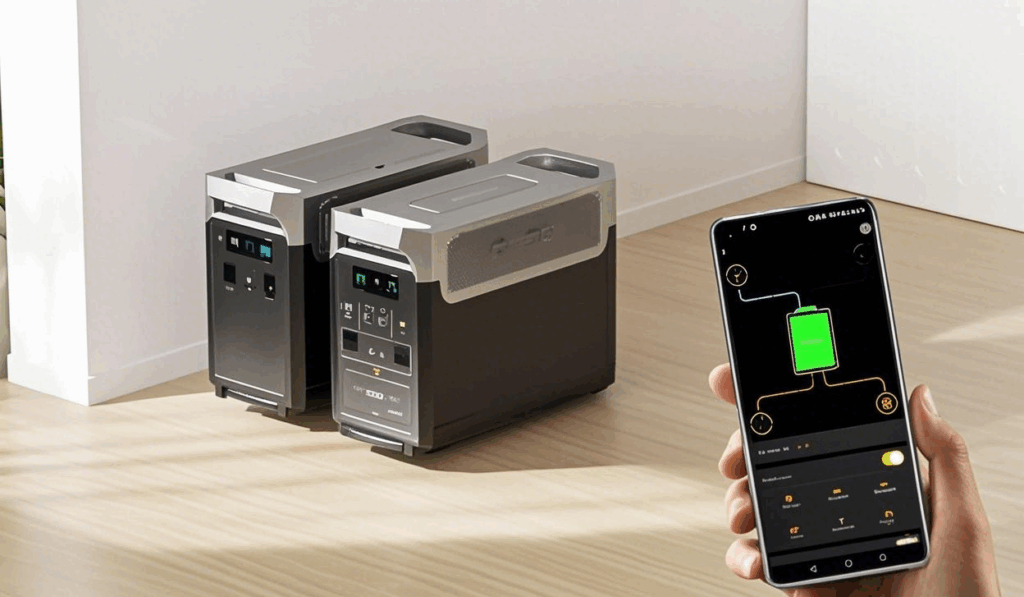
Some even offer firmware updates via the app, ensuring your device stays optimized with the latest features and fixes. These smart capabilities not only enhance convenience but also help you manage your power more efficiently, prolonging battery life and avoiding unexpected outages.
10. After-Sales Support and Warranty: An Investment in Peace of Mind
Beyond the technical specifications, consider the after-sales support and warranty offered by the manufacturer. A portable power station is a significant investment for your van life.
- Warranty Period: Many reputable manufacturers offer 2 to 5-year warranties on their portable power stations. A longer warranty indicates the company’s confidence in their product’s durability and can save you from unexpected repair or replacement costs down the line.
- Customer Service and Support: Research the brand’s reputation for customer service. Are they responsive to inquiries? Do they have readily available technical support or repair centers? Knowing you can get help if something goes wrong is crucial, especially when you’re on the road.
- Availability of Accessories: Check if replacement cables, solar panels, or additional battery packs are easily available from the manufacturer or third-party vendors.
Conclusion: Powering Your Freedom, Wisely
In the end, choosing the ideal portable power station for van life is about more than just specs—it’s about how well the unit fits into your daily rhythm and limited living space. A good match provides the energy you need without getting in the way, supports flexible charging options, and is built to last, wherever the road leads.
By evaluating key factors like battery chemistry, dimensions, power output, and after-sales support, you’re not just buying a gadget—you’re investing in the freedom and comfort of your mobile home. Let these 10 tips guide you to a power station that ensure your adventures are always powered, no matter where the road takes you, keeps your journey smooth, safe, and always charged.

